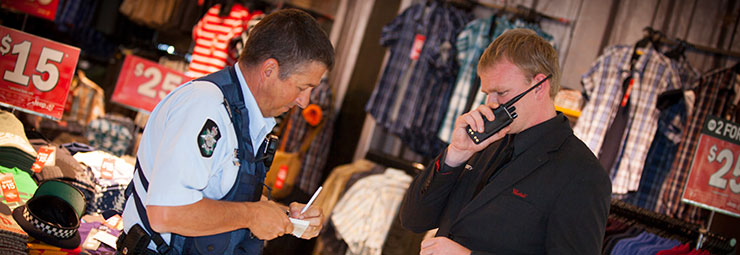Shoplifting prevention and detection

As most shoplifting offences are opportunistic crimes, the following steps can be taken to reduce theft.
- Acknowledge all of your customers and if possible keep customers in view at all times
- Adequately light all selling areas
- Always face your customers, especially when using the telephone
- Always put merchandise away promptly
- Always ensure keys are carried on the person or in a secure area and are not left on a counter or desk
- Arrange store layouts for ease of supervising customers and stock
- Count the day’s takings in the privacy of an office and behind a locked door
- Empty the cash drawer regularly to ensure the minimum amount of cash is present at any time
- Ensure that price tickets are fixed securely to merchandise
- Have a rapid and unobtrusive system to alert supervisors if there is any suspicious activity
- Implement procedures to count the number of items being taken in and out of change rooms
- Keep cash drawer closed at all times and do not leave it unattended
- Move attractive and expensive merchandise away from exits or shop corners, etc. Place them in the middle of the merchandise area, raised areas or near the point of sale
- Place the cash drawer in a position that cannot be reached by customers
- Serve children as quickly as possible
- Spend the maximum amount of time on the shop floor assisting customers, as opposed to being behind the counter
- Never leave the shop front unattended
- Try and ensure more than one staff member is working at a time
- Use one way entrance and one way exit flow systems in self service units
- Watch merchandise near the edges of the tables or counters
- Watch out for customers who don’t appear to be interested in purchasing items
- Watch out for diversions and overcrowding in general areas
- Ensure that all employees are familiar with stock on display.
Factsheet: Reporting minor theft/shoplifting to police
Bag checking and searching
There is currently no specific legislation dealing with a business owner’s right to check a customer’s bags or search a person. You can set conditions of entry ie. including presenting bags, parcels, cartons, or containers for checking by staff.
One method of displaying conditions of entry is using prominently displayed notices that clearly set out conditions of entry. The notices should be as large as practicable and displayed at a point where they can be seen clearly prior to entry to the business. However, even though a customer may read the sign and enter the store he/she is under no legal obligation to allow a search of their bags, even a visual search. Th e business may ask to see inside the bag, but if refused they cannot demand.
View the bag checking and searching fact sheet to learn more about, consent for bag checks, training your staff and refusing entry of customer bags.






